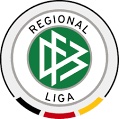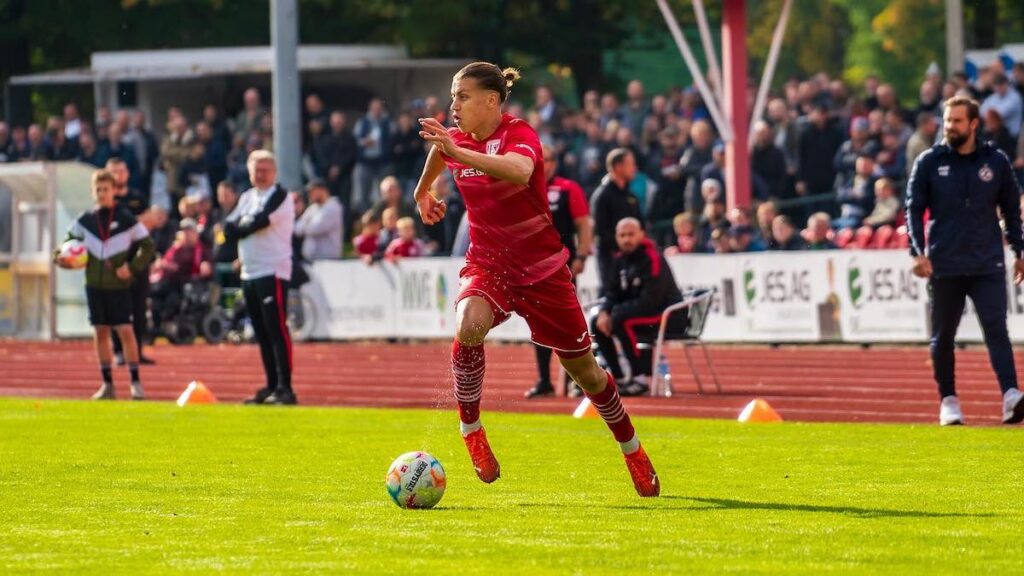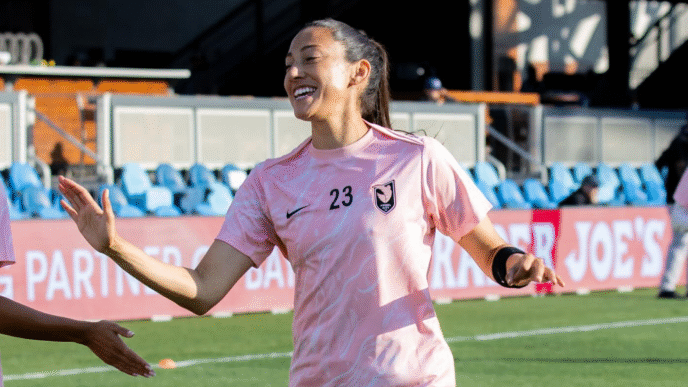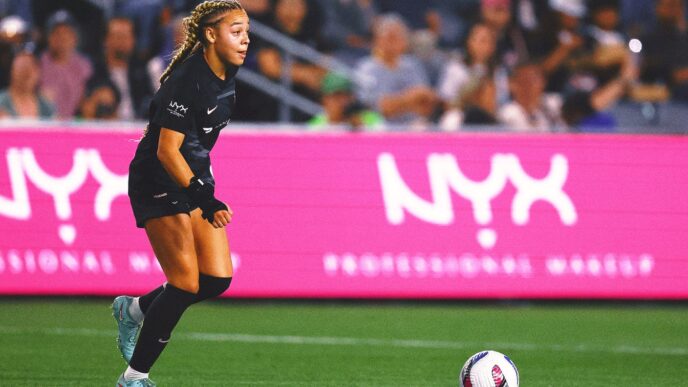What is Regionalliga? Discover The 4th Tier of German Football
Unlike soccer in America, Germany has a multi-tiered, hierarchically interconnected league system with promotion and relegation, and everything depends upon a team’s performance.
Americans know the names of the top Bundesliga champions, especially the current champions, FC Bayern Munich. This impressive club has won the title 32 times and is globally recognized, but what about the hundreds of other football clubs in Germany?
The Bundesliga is the top #1 league in Germany. Understanding promotion and relegation and appreciating the pyramid of soccer in Germany are essential. Discovering the lower levels is also necessary. There are five professional league levels plus several additional lower leagues!
Promotion and Relegation in German Football: How It Works
To understand why the lower leagues are so critical, you must first understand promotion and relegation so you can see how fluid the different tiers are. Unlike in the USA, a top team can be relegated (move down), and a team that plays in a lower league can move up.
Germany’s promotion and relegation system is one of the most structured and competitive in world football, ensuring a constant flow of teams moving up and down based on performance. Here’s how it works across the top four tiers of the German football pyramid:
Bundesliga (1st Tier) & 2. Bundesliga (2nd Tier)
- The bottom two teams in the Bundesliga are automatically relegated to 2. Bundesliga.
- The third-to-last team (16th place) in the Bundesliga enters a promotion/relegation playoff against the third-place team in 2. Bundesliga—the winner plays in the Bundesliga the following season.
- The top two teams in 2. Bundesliga are automatically promoted to the Bundesliga.
2. Bundesliga & 3. Liga (3rd Tier)
- The bottom two teams in 2. Bundesliga are automatically relegated to 3. Liga.
- The 16th-place team in 2. Bundesliga plays a promotion/relegation playoff against the 3rd-place team from 3. Liga for a spot in 2. Bundesliga.
- The top two teams in 3. Liga are automatically promoted to 2. Bundesliga.
3. Liga & Regionalliga (4th Tier)
- The bottom four teams in 3. Liga are automatically relegated to the Regionalliga.
- Promotion from the Regionalliga (4th tier) to 3. Liga is more complex since Regionalliga is divided into five regional leagues:
- Regionalliga West
- Regionalliga Nord
- Regionalliga Nordost
- Regionalliga Bayern
- Regionalliga Südwest
- Only four teams can be promoted from Regionalliga to 3. Liga, so champions from some leagues must compete in promotion playoffs to secure a spot.
Why Promotion & Relegation Matters
Germany’s open system allows ambitious lower-league clubs to climb the ranks and reach professional football, while underperforming teams are relegated to a lower tier. This ensures high competition, player development, and an exciting league structure where every match counts.
The promotion and relegation model in Germany is one of the most successful in global football. It produces strong clubs, passionate fan bases, and a steady stream of talent moving up through the system.

The Power of Germany’s Fouth Tier of Soccer
Known for its intense competition and player development, the Regionalliga is a crucial stepping stone for young talents and ambitious clubs striving to reach professional football. Divided into five regional divisions, this league features a mix of historic clubs, Bundesliga reserve teams, and emerging squads fighting for promotion to Germany’s fully professional leagues. With high-level matches, passionate fanbases, and a pathway to the top tiers, the Regionalliga plays a vital role in shaping the future stars of German football.
The Regionalliga is considered a semi-professional league, with many of the clubs featuring a mix of professional and amateur players. Some clubs have strong youth systems and act as feeders for the professional clubs in the Bundesliga and 2. Bundesliga.
The fourth tier of the German football league system is the Regionalliga, which is divided into five regional leagues – Nord, Nordost, West, Südwest, and Bayern. The Regionalliga is one level below the 3. Liga, the third tier of German football, and fans travel to support their favorite teams.
With top-quality play, the soccer played in the Regionalliga league is a breeding ground for scouts and head coaches. Here is a link to the Regionalliga table.
Several German professional players have played in the Regionalliga before entering the Bundesliga as a gateway to the higher level of professional football in Germany.
Here are a few examples:
- Mats Hummels: The central defender, who has won numerous titles with Bayern Munich and the German national team, played for Bayern Munich II in the Regionalliga before debuting for the first team.
- Joshua Kimmich: The German midfielder, a key player for Bayern Munich and the German national team, began his professional career with RB Leipzig in the Regionalliga Nordost. He then moved to VfB Stuttgart and later joined Bayern Munich, where he has won multiple Bundesliga titles and other trophies.
- Serge Gnabry: The speedy winger, who also plays for Bayern Munich and the German national team, played for VfB Stuttgart II in the Regionalliga before moving to Arsenal and returning to Germany.
- Julian Weigl: The defensive midfielder, who now plays for Benfica in Portugal, played for 1860 Munich II in the Regionalliga before making his debut for the first team and later moving to Borussia Dortmund.
- Max Kruse: The striker, who has played for several top clubs in Germany and abroad, played for SV Wilhelmshaven in the Regionalliga before moving up to the second and eventually the first divisions.
- Timo Werner: The German forward, who plays for RB Leipzig in the Bundesliga, began his professional career with VfB Stuttgart II in the Regionalliga Süd before moving to the first team and then joining RB Leipzig. He became one of the top goalscorers in the Bundesliga before moving to Chelsea in the English Premier League.
Each Regionalliga consists of 18 teams, with the top team from each league earning promotion to the 3. Liga. The teams finishing in the bottom three places of each Regionalliga are relegated to the Oberliga, the fifth tier of the league system.
In Germany, it is common for top-flight clubs to have a reserve or second teams that compete in the lower leagues. In the case of the Bundesliga, several clubs have second teams that compete in the Regionalliga. Some examples of Bundesliga clubs with second teams competing in the Regionalliga are:
- Borussia Dortmund II
- Bayern Munich II
- Borussia Mönchengladbach II
- Werder Bremen II
- VfL Wolfsburg II
- FC Schalke 04 II
- FC Köln II
- Hertha BSC II
These clubs typically use their second teams to develop young players and provide a pathway to the first team. The Regionalliga is highly competitive, with many clubs fighting for promotion to the 3. Liga each season.

An example of a team recently promoted to the Regionalliga is Greifswalder FC which plays in Regionalliga Nordost. International Soccer Academy’s alumni Joe Joe Richardson plays for Greifswalder FC. This American-born soccer player is a regular starter on the squad and just recently signed his second contract with the German club coached by Roland Kroos (Real Madrid’s Toni Kroos’ dad).
The league also provides opportunities for players to develop their skills and potentially earn professional contracts with higher-level clubs.
Keep in mind that Germany has one of the highest global average attendances at soccer matches, and German fans are not distracted by a divergence of multiple sports. In Germany, there is enough passion for the beautiful game to support the success of multiple leagues.















